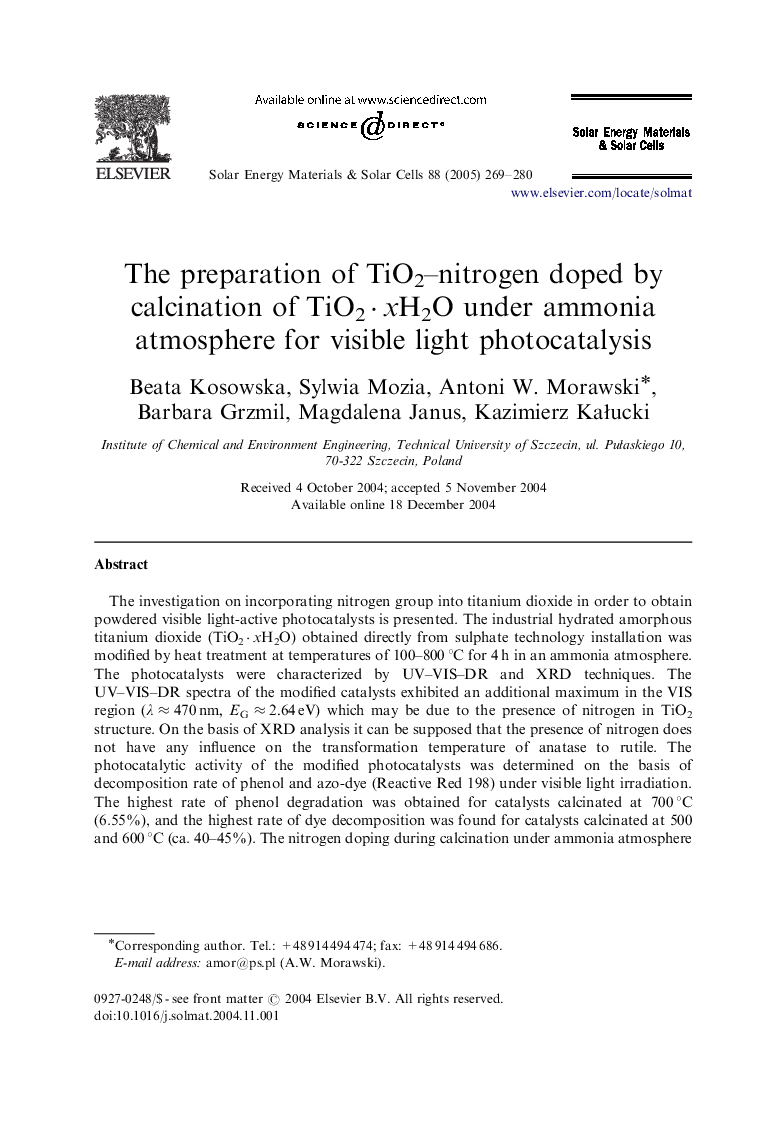| Article ID | Journal | Published Year | Pages | File Type |
|---|---|---|---|---|
| 10249258 | Solar Energy Materials and Solar Cells | 2005 | 12 Pages |
Abstract
The investigation on incorporating nitrogen group into titanium dioxide in order to obtain powdered visible light-active photocatalysts is presented. The industrial hydrated amorphous titanium dioxide (TiO2·xH2O) obtained directly from sulphate technology installation was modified by heat treatment at temperatures of 100-800 °C for 4 h in an ammonia atmosphere. The photocatalysts were characterized by UV-VIS-DR and XRD techniques. The UV-VIS-DR spectra of the modified catalysts exhibited an additional maximum in the VIS region (λâ470nm, EGâ2.64eV) which may be due to the presence of nitrogen in TiO2 structure. On the basis of XRD analysis it can be supposed that the presence of nitrogen does not have any influence on the transformation temperature of anatase to rutile. The photocatalytic activity of the modified photocatalysts was determined on the basis of decomposition rate of phenol and azo-dye (Reactive Red 198) under visible light irradiation. The highest rate of phenol degradation was obtained for catalysts calcinated at 700 °C (6.55%), and the highest rate of dye decomposition was found for catalysts calcinated at 500 and 600 °C (ca. 40-45%). The nitrogen doping during calcination under ammonia atmosphere is a very promising way of preparation of photocatalysts which could have a practical application in water treatment system under broader solar light spectrum.
Keywords
Related Topics
Physical Sciences and Engineering
Chemical Engineering
Catalysis
Authors
Beata Kosowska, Sylwia Mozia, Antoni W. Morawski, Barbara Grzmil, Magdalena Janus, Kazimierz KaÅucki,
